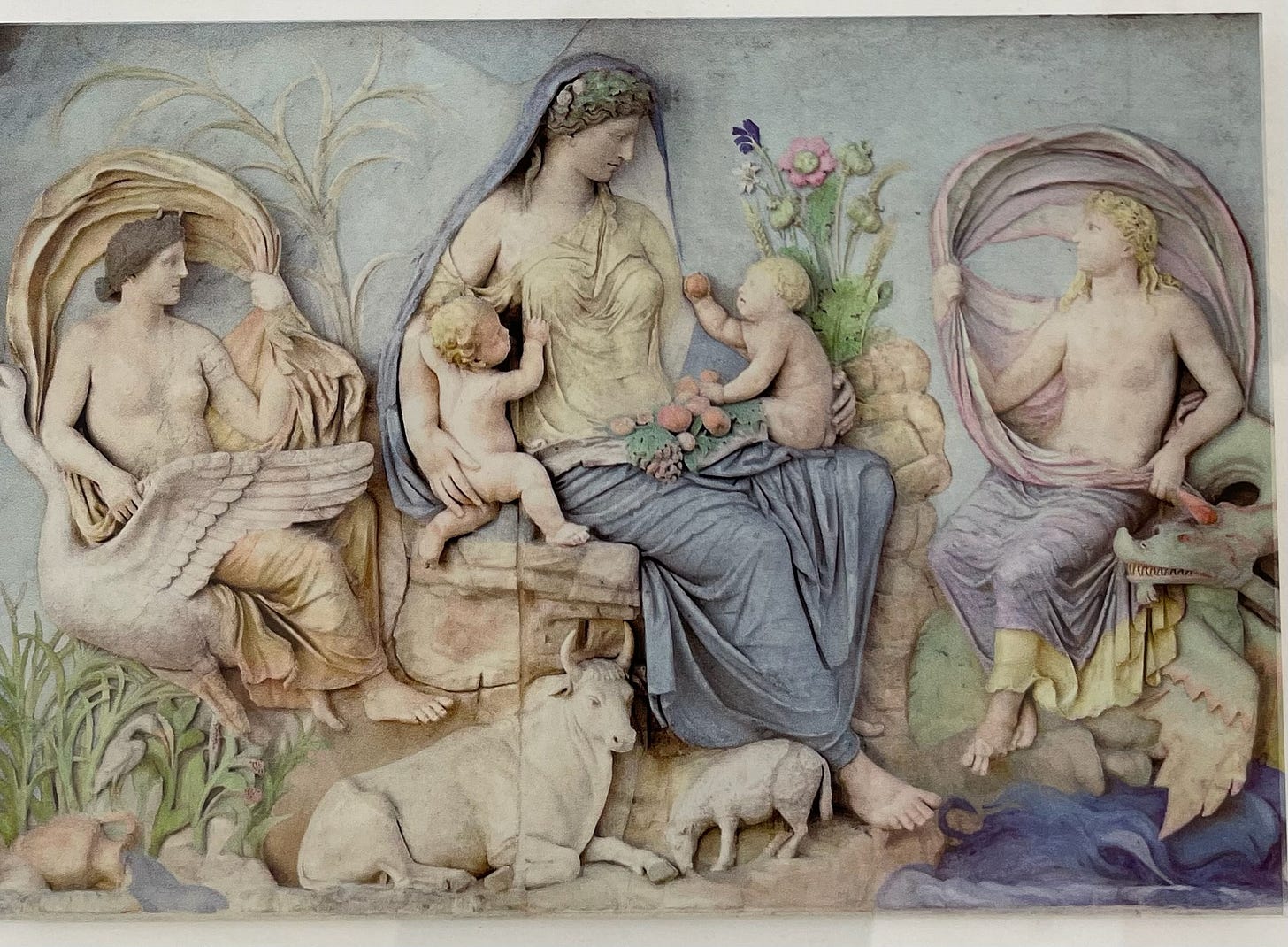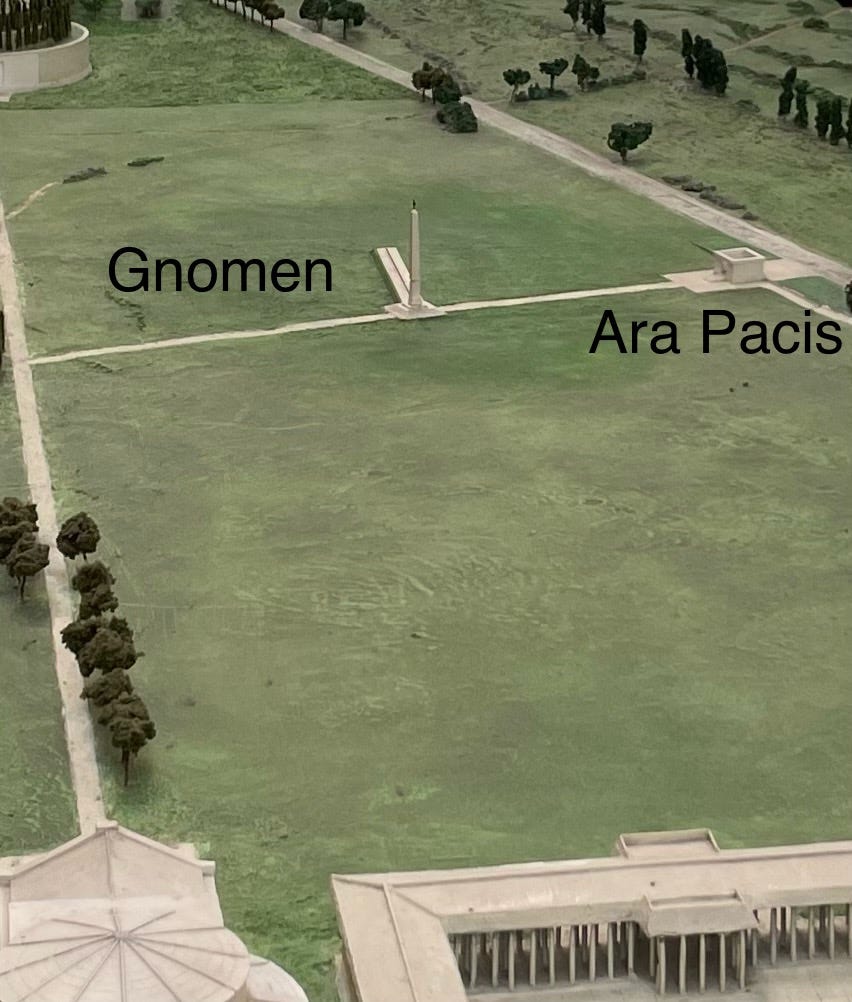Ara Pacis Augustae: A hidden gem on the banks of the Tiber
Getting away from the crowds in Rome and exploring the Age of Augustus, Rome’s first Emperor.
We had set aside four days to explore Rome last November, revisiting one of our favorite cities before a transatlantic cruise. But even in November the crowds were much bigger than we had ever seen, and tickets to the main attractions were scarce. Instead of standing in long lines we explored some of our favorite haunts and some new places as well. One of the new ones was Ara Pacis.
Emperor Augustus’ Altar of Peace, “Ara Pacis Augustae,” lies today on the east bank of the Tiber River, an easy 12 minute walk north of Piazza Navona along the Tiber. This lightly visited gem provides a nice escape from the touristy bustle of Rome and insights into civic life at the beginning of the Roman Empire.
In the words of Augustus himself. “When I returned to Rome from Spain and Gaul, having successfully accomplished deeds in those provinces … the Senate voted to consecrate the Altar of August Peace in the Campus Martius … on which it ordered the magistrates and priests and Vestal Virgins to offer annual sacrifices.” Built at the order of the Roman Senate to honor Augustus, it was dedicated on January 30, 9 BCE, 2031 years ago.
Julius Caesar was assassinated in 44 BC, naming his 18 year old grandnephew Augustus as his adopted son and heir. Augustus was the grandson of Caesar’s wife’s sister.
Originally Ara Pacis stood in an open area in the north of Campus Martius near Obeliscus Augusti Gnomen, a red granite obelisk covered with Egyptian hieroglyphics, brought by Augustus from Egypt a year before Ara Pacis was dedicated in 9 BCE.
Augustus dedicated the obelisk to the Sun. Once a year, on September 23, Augustus’ birthday, the obelisk’s shadow would fall on Ara Pacis. Campus Martius was on a flood plain in the area that includes the Pantheon and Piazza Navona.
The altar stands today close to the Tiber near Augustus’ mausoleum inside another protective building with many windows to fully illuminate the altar while protecting it from the elements. It was moved here by Mussolini in 1937-8, on the 2000 year anniversary of the birth of Augustus. In 2005 a new building was constructed to house it.
Animals were sacrificed here. Blood stains attest to it. The rectangular hole in the photo above was the outlet for drains built into the altar to collect the blood of the sacrifices.
These sacrificial rituals were instrumental in maintaining civic order as part of the state religion of the time. The gods were appeased, the entrails were interpreted, the shadow of the Sun moved in harmony with the state, not unlike the practices of the ancient Aztecs, who also tied their glory and power to that of the Sun.
The carved marble sculptures around the altar conveyed the official ideology of the state. The images depict the founding of Rome, its deities, and domestic tranquility, and give credibility to a sober procession of citizens, led by Emperor Augustus and his family. Augustus and his family provide a personal example of how good citizens behave.
It is not an accident that there are Nazi symbols on this altar. The Nazis took Roman symbols, including the fasces and the swastika, to connect themselves to the glory of Rome. Today these symbols revolt us. But at the time they signified power and glory. The man to the right is a lictor, holding a bundle of sticks tied around an ax, called fasces. They cleared the way for magistrates, guarded the magistrates house, and punished offenders. It is from these that we get the word fascist. The swastika-like border design is considered a solar symbol by a majority of scholars and is thought to have originated in Asia, although obviously the Romans were familiar with it.
Of course Christianity became legal in Rome in 313, to be followed in 390 by the Gauls, who sacked and burned the city. How many other altars like this were destroyed? Hundred or thousands no doubt. But the Tiber flooded, covering up this relic, and now we can more easily understand this ancient time.
Last November tickets to the coliseum and Capitoline Hill were sold out. But we had this place to ourselves. From here you can cross the Tiber and go back to the south towards Hadrian’s Mausoleum, now known as Castel St. Angelo, or keep going north along the east bank of the Tiber to Piazza del Popolo.
I hope to cover the Piazza Navona and Piazza Del Popolo in upcoming articles.
Sources:
Res Gestae Divi Augusti (“Deeds of the Divine Augustus”), epigraphical memoir by Augustus.
I found one other write up on Ara Pacis. My 5 Favourite Stops in Greece and Italy. The author ranks it #2!
Thanks for reading!







